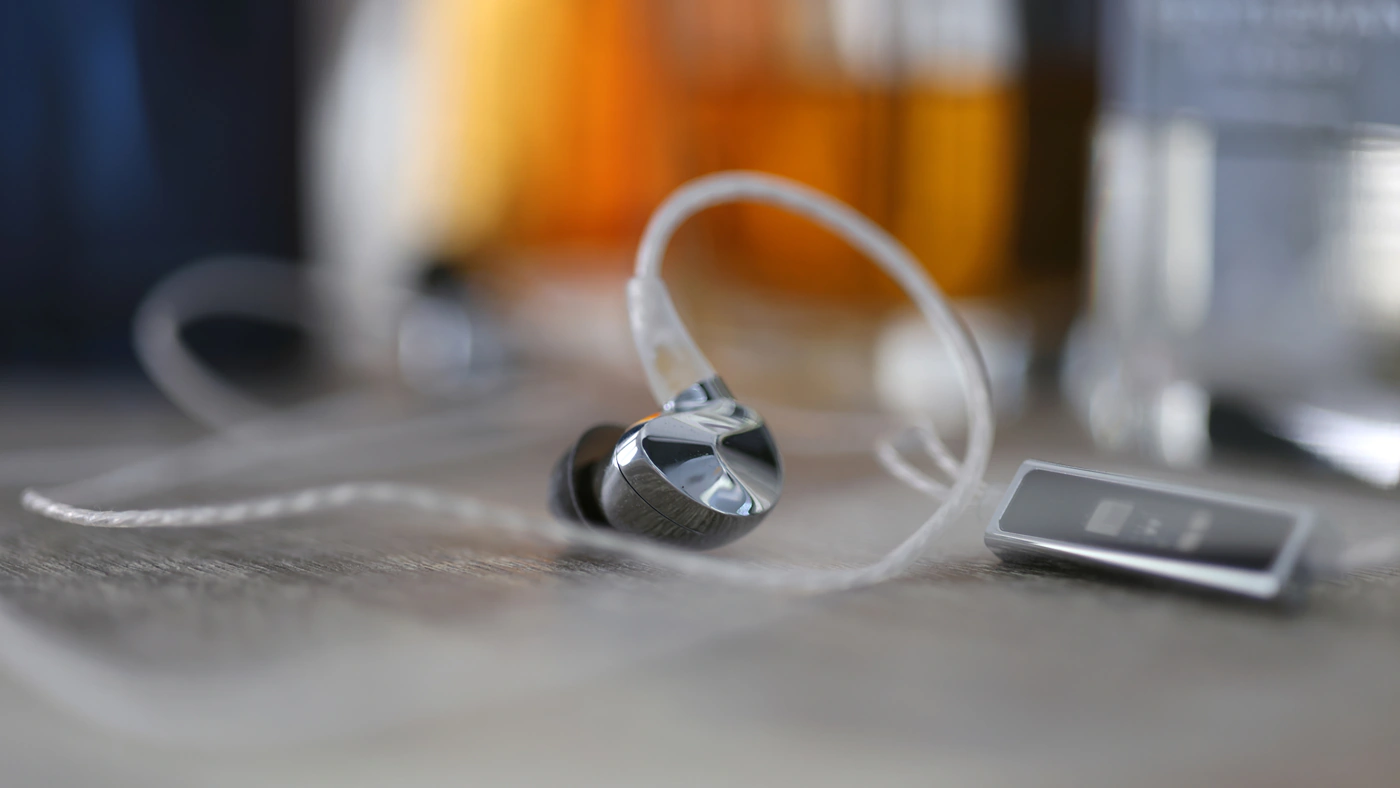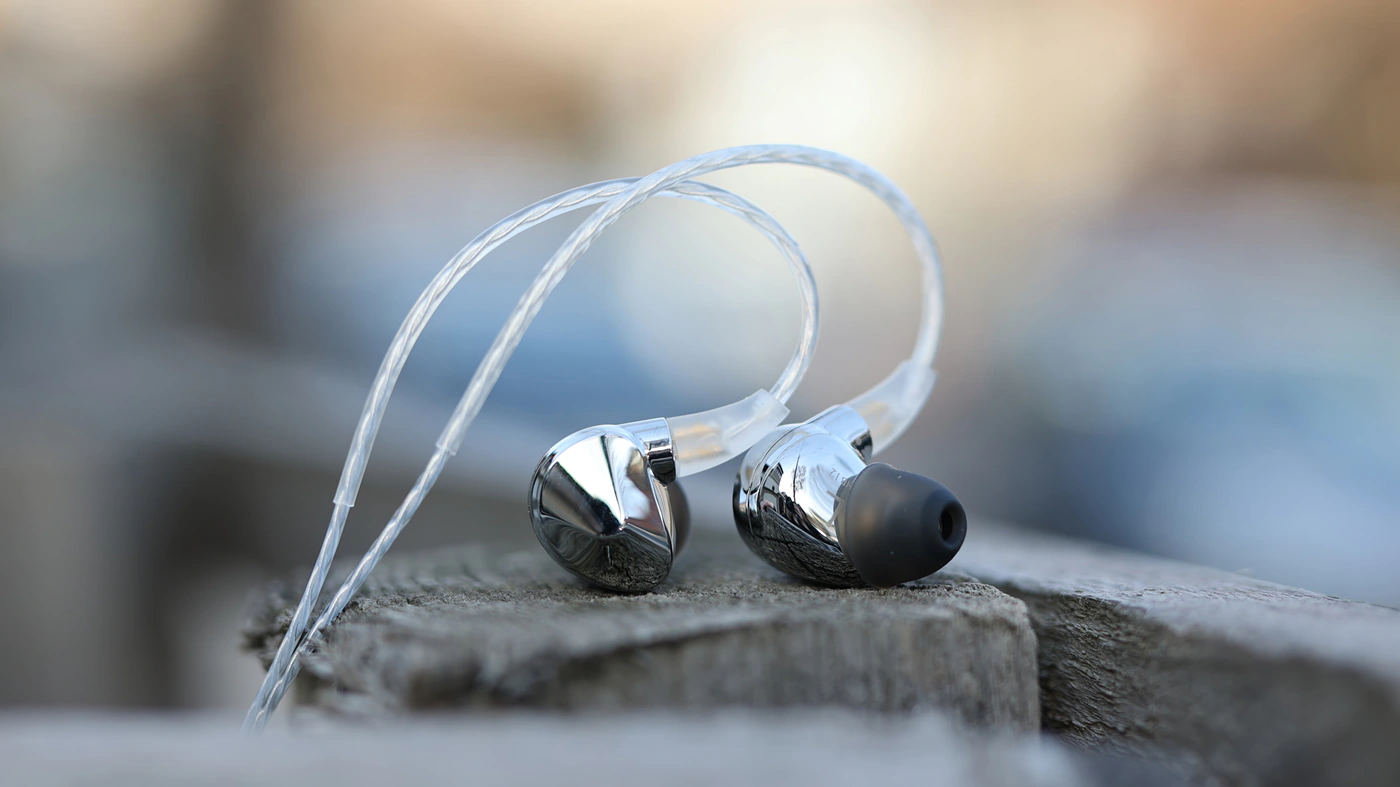Questyle NHB12 Apple MFi Certified IEMs – Galvanized Steel Sound
Questyle NHB12 is a $399 USD pair of IEMS with Apple MFi Certified Lighting connector / DAC / Adapter which we will review today, and compare to other similarly priced IEMs, including Letshuoer S15 (329 USD), ThieAudio Hype 4 (399 USD), and Yanyin Canon II (379 USD).

Product Link
You can grab one here – https://amzn.to/4cuQJZW
Introduction
Questyle is a company that provides not just direct products, but also acts as an OEM and business partner for other companies, as we noted during our review of the Rubyoung R830 that the speaker and internal electronics are made by Questyle. That one speaker is actually in usage daily as my editor’s main speaker, thanks to its easy setup in a smaller desktop setup. As an Amazon Influencer, I earn from qualifying purchases, and using the purchase links in my reviews helps me maintain this website and Youtube Channel. Questyle has provided the sample for this review, in exchange for my honest opinion.

PROs – Deep, powerful and bold bass, clean midrange, sharp and airy treble, voluptuous and full sound, comfortable fitting, excellent cable selection, the iPhone DAC sounds really good, easy to drive, strong passive noise isolation.
Cons – It is hard to achieve low volumes with most sources, as the IEMs are so sensitive and easy to drive.
Product Link
You can always grab a pair of Unique Melody Mest MKii from www.amazon.com here:
Build Quality/Aesthetics/Fit/Comfort
Starting with the shape and the design, NHB12 is actually as much of an apple Certified IEM as it is a standard IEM, as inside the transport case, you can find a 3.5mm single ended cable to use the NHB12 with any other source, or with apple devices, but with a different DAC. The purpose of this Apple Certification is for NHB12 to deliver Hi-Res quality, up to 192kHz and 24 Bit data, straight from an Apple device. The apple lightning DAC allows you to play Apple Lossless codec, and it includes a DAC and an AMP right at the Y Split.

There is mention of noise isolating and canceling, but they refer to passive noise isolation, as there is no ANC or active noise canceling. There are 5 pairs of ear tips included in the package, and they are a special blend of oval almost trumpet like eartips, with a slhgtly sticky silicone, which should help you get excellent comfort with the NHB 12.

This is one of the easiest to drive IEMs out there, and even compared to IEMs, they draw very little power, not just with their lightning DAC, but also from all my sources, needing very little volume to sound loud. There is little information available as to what drivers are inside of the NHB12 or what the technology inside is in general.

The wearing comfort is rather excellent, with the metallic shells being rounded and ergonomically designed, the eartips do a really good job at keeping the IEMs inside of my ears, while the cable is springy, but lightweight, and it does not conduct microphonic noise. The passive noise isolation is fairly good, between 18 and 25 dB, which is slightly above the average. Both cables are 1.2 meters long, and they have

For today’s review, I tried the NHB12 with an iPhone 14 PRO MAX borrowed from an aunt, but also used the 3.5mm cable to drive the NHB12 with traditional audiophile sources, including Burson PlayMate 2, Shanling H2, HIFIMAN Goldenwave Serenade, Dethonray Listening M1, HIFIMAN EF400, IKKO ITX05, and iBasso DX260. Generally speaking, you will not have problems driving the Questyle NHB12, and they are not very sensitive to the source, generally are not sensitive to hissing and background noise, but they scale well with a source that can give them proper control, punch and depth.
Sound Quality
Overall Signature – Questyle always goes for bold tunings, and NHB12 is no exception, this is a full, deep and lush sounding IEM, with a really strong bass, colorful and detailed midrange, and an airy treble. The tuning is perfect for both commercial music, and rock, EDM and Dubstep. The speed of sound is natural, and the soundstage is very good, with a strong width and depth, and with a fairly good instrument separation too.

Bass – The bass starts down low, at 35 Hz, and it is powerful, with a bold quantity from the lowest punch, being able to give an earth-shattering blow for EDM and Electronic music. The bass has zero distortion, and I got to like it quite a lot, being full, heavy and large, without crossing into too much territory. Bass speed is natural, leaning towards slow, it can create a natural decay and generally doesn’t have too much texture but it doesn’t feel lazy or slow.

Midrange – The midrange is heavy, thick and has a lush presentation, inheriting a lot of lower midrange bloom from the bass, along with a bit of upper midrange peak from the treble, basically sounding a bit V-Shaped. This pulls back the presence of baritone voices, but allows both low-pitched and high-pitched voices to be forward, present and dynamic / engaging. The guitar also has this presentation, where solo and lead guitars sound really vivid and punchy, while mid riffs especially in death metal are less forward. Midrange speed is natural edging on slow.

Treble – We start with a bit of a peak around the lower treble and upper midrange, which gives music and cymbals energy and presence, although the air level is natural, while the soundstage is wide, holographic and I felt multiple times like the sound was coming from outside the IEMs. Layering is very good, while instrument separation is average, NHB12 basically will show you the difference between certain instruments, but it won’t cut instruments surgically away from each other.

Dynamics / PRaT / Textures – As the sound of the NHB12 is generally a bit on the slower side, it has a mix of natural and smooth texture, allowing most instruments to have the macro details presented nicely, but textures are heavy and thick, which hides some of the micro details and micro textures slightly.

Volume Control – Generally, the sound gets more dynamic, punchier and brighter, more aggressive with higher volumes, and smoother, leaner and more relaxed with lower volumes. There is a bit of crowding at higher volumes, as the sound gets really chugg, as the dynamics get compressed and the presentation becomes a more typical “wall of sound” at really loud volumes.
Comparisons
Questyle NHB12 vs Letshuoer S15 (399 USD vs 329 USD)
Build – S15 is a larger IEM but with a lighter body. The eartips included with NHB12 offer me more passive noise isolation, and they are stickier, which gives more fit, but also can become uncomfortable for long periods of wear. NHB12 is much easier to drive, and you can purchase the package with a DAC for lightning devices, but you can actually use the NHB12 with standard sources while s15 comes with high-end modular cables that can use balanced outputs.

Sound – Sonically, S15 is far more relaxed, has a mid centric sound for the most part, and it is enjoyable with most music, but sounds really laid back and relaxed, while NHB12 sounds really peppy and uplifting, V-Shaped with a huge and warm bass, and a bit of treble edge. The maximum resolution is higher for S15, which extracts more detail and reveals more information, but NHB12 sounds really awesome too, both IEMs being easy to recommend and to enjoy.
Questyle NHB12 vs ThieAudio Hype 4 (399 USD vs 399+ USD)
Build – ThieAudio Hype 4 has a resin shell, which feels a bit lighter in my ears, but the shell is a bit larger, and the eartips included with NHB12 are of a slightly better quality, offering me a better fitting and comfort. Hype 4 is a bit more sensitive to source noise, harder to drive, but the cable included in the package is sturdier, thicker and less springy than the cable of NHB12.

Sound – Sonically, Hype 4 is far more midrange forward, it reveals more information and provides a cleaner, more precise listening experience which is far more dry and can also more easily be fatiguing than that of NHB12. By contrast, NHB12 has a much deeper bass, more volume, and a thicker midrange, with more texture, weight and body to each instrument. Both have a wide soundstage, but Hype 4 presents the mids in your face, which allows for less space for instruments, while NHB12 pulls exactly on the midrange, which creates a lot of space for instruments to play.
Questyle NHB12 vs Yanyin Canon II (399 USD vs 379 USD)
Build – Canon II is made of resin, and it feels slightly lighter than NHB12, having a better default cable, but the comfort of NHB12 is slightly better thanks to their smaller metallic shells and sticker tips that offer a better fit. Canon II is slightly more sensitive to source noise, while NHB12 is easier to drive, and will go loud much faster. Both offer a good passive noise isolation.

Sound – Sonically, Canon II is a bass cannon, but NHB12 also has a lot of bottom-end, so it is a good comparison because both have a really thick, lush and full sounding bass. The speed of bass on NHB12 is slower, it sounds more lush, but Canon II has more punch and a better extension especially in the sub-bass, where NHB12 rolls off slightly below 35 Hz. While both IEMs have a good detail, Canon II reveals a bit more information from music, especially micro textures and micro details, while NHB12 sounds more laid back and more relaxed in the upper midrange and the treble.
Value and Conclusion
As a big part of the design for Questyle NHB12 was that it is the world’s first Apple Certified True Lossless Earphone, it is important to note that for apple users, it will have much higher value than for someone who doesn’t have an iPhone or iDevice. It is also important to keep in mind that this is a full system, not just an IEM, so it has a DAC/AMP, and IEMs, the value being quite good, and becoming excellent when you take the sonic ability into account.

At the end of the day, if you’re looking for a bold sounding IEM, with a full bass, sparkly treble, and with a lush, thick and full sounding midrange, Questyle NHB 12 is the world’s first IEM specially made for apple devices with a lightning connector, with a version using a type-c connector also available for purchase.
Product Link
You can grab one here – https://amzn.to/4cuQJZW
Technical Specifications

Driver – 10.2mm Dynamic with custom diaphragm voice coil
Minimum Working Voltage – 2V
Working Current – 3mA
Audio Decoding – 192k
Ultra Low Distortion – 0.0002%
Questyle 365 DAYS Warranty
--- Please remember to stay safe, and always have fun while listening to music!---
- If you have a dime to spare, please donate, and help us! It would make the day brighter for me and my wife-
Full Playlist used for this review
We listened to more songs than those named in this playlist, but those are excellent for identifying a sonic signature. I recommend trying most of the songs from this playlist, especially if you’re searching for new music! The playlists are different for Spotify, Tidal and Youtube, and based on the songs I enjoy and are available on each!
https://www.youtube.com/playlist?list=PL_cjBXGmwSHSdGcwuc_bKbBDGHL4QvYBu
https://open.spotify.com/playlist/5J3oloz8Riy9LxEGenOjQ0?si=979ba4f082414be7
https://tidal.com/browse/playlist/330fd544-8e5b-4839-bd35-676b2edbb3d5
--- Contact Us ---





